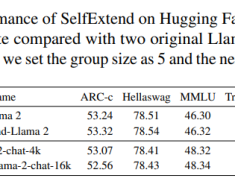
Review
. 2024 Feb 22:17:17562848241227031.
doi: 10.1177/17562848241227031.
eCollection 2024.
Affiliations
Item in Clipboard
Review
Therap Adv Gastroenterol.
.
Abstract
Over the past year, the emergence of state-of-the-art large language models (LLMs) in tools like ChatGPT has ushered in a rapid acceleration in artificial intelligence (AI) innovation. These powerful AI models can generate tailored and high-quality text responses to instructions and questions without the need for labor-intensive task-specific training data or complex software engineering. As the technology continues to mature, LLMs hold immense potential for transforming clinical workflows, enhancing patient outcomes, improving medical education, and optimizing medical research. In this review, we provide a practical discussion of LLMs, tailored to gastroenterologists. We highlight the technical foundations of LLMs, emphasizing their key strengths and limitations as well as how to interact with them safely and effectively. We discuss some potential LLM use cases for clinical gastroenterology practice, education, and research. Finally, we review critical barriers to implementation and ongoing work to address these issues. This review aims to equip gastroenterologists with a foundational understanding of LLMs to facilitate a more active clinician role in the development and implementation of this rapidly emerging technology.
Keywords:
ChatGPT; artificial intelligence; large language models; machine learning.
Plain language summary
Large language models in gastroenterology: a simplified overview for clinicians This text discusses the recent advancements in large language models (LLMs), like ChatGPT, which have significantly advanced artificial intelligence. These models can create specific, high-quality text responses without needing extensive training data or complex programming. They show great promise in transforming various aspects of clinical healthcare, particularly in improving patient care, medical education, and research. This article focuses on how LLMs can be applied in the field of gastroenterology. It explains the technical aspects of LLMs, their strengths and weaknesses, and how to use them effectively and safely. The text also explores how LLMs could be used in clinical practice, education, and research in gastroenterology. Finally, it discusses the challenges in implementing these models and the ongoing efforts to overcome them, aiming to provide gastroenterologists with the basic knowledge needed to engage more actively in the development and use of this emerging technology.
© The Author(s), 2024.
Conflict of interest statement
GN: consultancy agreements with AstraZeneca, BioVie, GLG Consulting, Pensieve Health, Reata, Renalytix, Siemens Healthineers, and Variant Bio; research funding from Goldfinch Bio and Renalytix; honoraria from AstraZeneca, BioVie, Lexicon, Daiichi Sankyo, Menarini Health, and Reata; patents or royalties with Renalytix; owns equity and stock options in Pensieve Health and Renalytix as a scientific cofounder; owns equity in Verici Dx; has received financial compensation as a scientific board member and advisor to Renalytix; serves on the advisory board of Neurona Health; and serves in an advisory or leadership role for Pensieve Health and Renalytix. OS: consultancy agreements with SonarMD and Castle Biosciences. All other authors: no conflicts of interest to declare.


![[2401.08683] Zero-Shot RTL Code Generation with Attention Sink Augmented Large Language Models [2401.08683] Zero-Shot RTL Code Generation with Attention Sink Augmented Large Language Models](https://aigumbo.com/wp-content/uploads/2023/12/arxiv-logo-fb-235x190.png)
